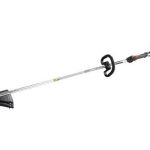Do you care for your lawn? Do you believe that you have the knowledge it takes to perform DIY lawn care?
An online survey performed by the Harris Poll for the National Association Of Landscape Professionals, was done in 2016 on how knowledgeable do-it-yourself lawn care enthusiasts are about their lawn. The survey included 2,000 American adults and found that a majority of them lack the basic knowledge it takes to properly care for and maintain their lawn.

(Courtesy: Andie Harsany at flickr.com)
Eighty-five percent of those surveyed said that they or someone in their household care for their lawn.
In addition, the survey discovered that out of the 2,000 participants, 74 percent said that they know how to care for their lawn each season and 68 percent said that they are confident that they have the knowledge it takes to care for their lawn.
According to the survey, a majority of respondents did not really have such knowledge. For example,
- 64 percent of Americans falsely believe all grass needs to be fertilized in the spring.
- 57 percent wrongly believe that if a lawn isn’t green, then it isn’t healthy.
- 32 percent said that they know how often a lawn should be watered.
- 31 percent said that they don’t know how to grow a healthy, lush lawn.
Moreover, a little bit of math is a portion of that knowledge DIY lawn care enthusiasts need to know.
For example, if you fertilize your lawn yourself, then you need to know the square footage of your lawn. This ensures that you will purchase the proper amount of fertilizer. You also need to know that in some cases, knowing the proper amount of fertilizer to buy is also dependent on the type of grass of which your lawn is comprised. Bluegrass or Bermudagrass need more nitrogen than centipedegrass or fine fescue.
If you go to your neighborhood gardening store and end up buying a bag of fertilizer that does not say anywhere on it how much the bag covers, then it is up to you to calculate that on your own so that you buy the proper number of bags you will need. The number depends on the weight of the bag, what percentage of it is nitrogen and how much nitrogen you will want to spread for every 1,000 square feet.
So how do you calculate how many bags of fertilizer you will need?
The math problem is pounds of nutrient you want to apply per 1,000 square feet divided by the percentage of the nutrient in the bag equals the amount of fertilizer per 1,000 square feet. Then you need to divide that amount into the weight of the bag to determine the total square footage the bag will cover.
But as previously noted, it doesn’t end there. You also need to know how much nutrient the type of grass in your lawn requires. An Internet search will help you with that question. You also need to take the time of year into account as well as the weather conditions when the fertilizer is spread.
Then, it is necessary to have the proper equipment with which you will apply the fertilizer. The equipment has to be properly calibrated so that the right amount of fertilizer is used.
And there’s still more. You have to have an understanding of the proper operation of the spreader. If you don’t, then it is possible that you may apply too much and burn your lawn or too little causing what is called “striping” the lawn.
Wait, there’s still more. You also need the proper equipment. There are two methods to spreading fertilizer –- a hand-held sprayer or a hose end sprayer.
Finally, you have to take the weather into account. It can’t be too hot, too cold, or too windy.
It should be obvious to you by now that caring for your lawn yourself takes a lot of research and learning. If you truly are an enthusiast, then the education should be as much a joyous adventure as the actual work.
(Sources: Businesswire.com and spring-green.com)






